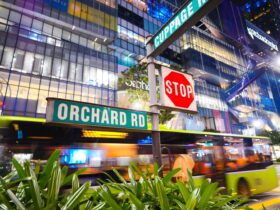There’s more to northern Japan than nature and hot springs — it has some of the most authentic cuisine, culture and craftsmanship that Japan has to offer

Check out Hakodate’s famed seafood in all its glory at the morning market that opens from 5am to 12pm.
Often associated with fresh seafood, hot springs and breathtaking scenery, Japan’s northern region, including tranquil Tohoku and scenic Hokkaido, offers visitors a refreshing change from the country’s buzzing capital.
The area, largely undiscovered by tourists, is a treasure trove of gourmet discoveries and shops. Here are five towns that are best for that epicurean holiday, with a dash of sightseeing thrown in.

Hakodate
There’s no better way to experience the fresh seafood from Hokkaido’s third-largest city than to visit its morning market located near the JR Hakodate Station.
There, you can fish for a live squid and eat it raw immediately, take home packaged items such as ikameshi (squid stuffed with rice), and chow down on a donburi (rice bowl) at Kikuya restaurant where the former imperial princess, Sayako Kuroda, once ate at.
For locally-made souvenirs, head down to Kanemori Red Brick Warehouse, a row of repurposed warehouses built more than a century ago that now houses souvenir shops and Japanese and Western-style restaurants.
Then end the day by taking the Mt Hakodate ropeway just before the sun sets to see the dramatic view at the mountaintop. I decided to linger on for the night view and did not regret it. The city’s lights and dramatic coastline took my breath away.
Aomori

Nebuta Museum Wa Rasse’s stunning architecture is just a prelude of the elaborate floats that are displayed inside.
Every August, thousands flock to the sleepy town of Aomori at the northernmost point of Japan’s main island, to witness the Nebuta Matsuri, a week-long festival where brightly-coloured illuminated floats are paraded on the streets, accompanied by dancers and musicians in traditional costumes.
The award-winning floats are immortalised — the others are destroyed after the festival — in the Nebuta Museum Wa Rasse, where visitors can gawk at the floats up close and admire their elaborate workmanship.
Be sure to try Furukawa Fish Market’s Nokkedon, a pick-and-mix rice bowl that’s great for a quick lunch. All you need to do is purchase a sheet of coupons at the counter, and then proceed to the different stalls to exchange the coupons for a range of dishes, from sashimi to tempura.
And don’t leave Aomori, which produces the largest amount of apples in Japan, without picking up some of its local produce like apple cider and apple-flavoured snacks from A-factory.
Morioka
Morioka, the capital of Iwate Prefecture, is famous for three types of noodle dishes, and none of them are ramen.
The cold soup-based reimen has its roots in Korean cuisine; jajamen is derived from the Chinese meat sauce noodle dish zha jiang mian; and wanko soba is soba served in tiny bowls.
Instant versions of these noodles are readily available too. You can find them at the food section of Fesan shopping mall located in the Morioka train station, alongside an overwhelming assortment of savoury and sweet titbits.
Must-try items include the chocolate-coated rice crackers with sesame seeds, and the egg-shaped Kamome No Tamago (translates into seagull’s egg) cake that comes in different seasonal flavours such as chestnut and apple.
Morioka is also the centre of traditional Nambu Tekki ironware craft, which is making a comeback thanks to its colourful and contemporary tea pot designs. Visitors can purchase the iron goods at the Nambu Tekki centre, and also witness how well-trained craftsman make them by hand.
Sendai

Gyutan (beef tongue)
If you’re not squeamish when it comes to food, order one of Sendai’s specialities, grilled gyutan (beef tongue) at one of the many restaurants located within Sendai’s train station.
Seasoned simply with salt before being placed on a charcoal grill, the gyutan, sliced into a standard portion of eight thick slices, was juicy and flavourful. The dish is usually accompanied by barley rice — refills are typically free — and oxtail soup.
Aside from restaurants, the S-Pal shopping mall attached to Sendai’s busy station also has a food section that offers delectable treats that you can sample.
It’s easy to be distracted by the stores’ polite yet energetic attendants and attractively-packaged foods but don’t miss popular stores such as Kodama, which sells dorayaki (pancakes) stuffed with various pastes such as walnut; Moria, which has appetising zunda-flavoured (bean paste) cakes; and Date Arare Hompo for its soy sauce and sesame rice crackers.
Yamagata

Visit the Saito sightseeing orchard to pick some of the sweetest apples and pears you’ll ever taste.
Besides its many hot springs, Yamagata’s locally-produced fruits and sake are also what draws domestic tourists here.
Head to where the locals shop, and you’ll end up at Yamagataken Kanko Bussan Kaikan, an expansive store that stocks Yamagata’s local products including clothes, food and alcohol.
Beninokura is another destination that you shouldn’t miss, if you’re an architecture enthusiast. Built in 1902 as a residential estate by a wealthy merchant that traded safflower (abundant in Yamagata), most of the original site has been preserved and is now a multi-concept attraction.
Highlights include a traditional soba restaurant that hosts maiko (apprentice geisha) dinner shows, a European-style café, and a souvenir shop.
For a good dose of nature, visit the Saito sightseeing orchard, where you can pick apples, pears, and prunes off their trees depending on the harvest season. It is said that the fluctuating temperatures throughout the day is what makes the fruit here extra sweet.
Getting Here
From Tokyo, hop on a domestic flight towards Hakodate. The recommended destinations are easily connected from Hakodate via local railways and bullet trains, and you can easily work your way south to arrive back in Tokyo.
By Mavis Ang
Tip: Equip yourself with the Google Translate app or a Japanese phrasebook as these destinations are still very much undiscovered by international tourists.
Brought to you by Relation Japan Inc.
ADVERTISEMENTS










2 Comments